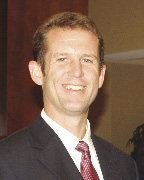First Half Results:
Smith Travel Research (STR) recently reported the three most important measurements for the first half of 2010 and the results are promising. According to STR, the second quarter of 2010 showed increased demand without a rate increase. (see chart A)
When you combine these 2nd Quarter results with the first three months the mid-year report indicates improvement over 2009. (see chart B)
Commenting on the results, Bobby Bowers at STR said, "Second-quarter room demand increased 8.7% - the industry's largest quarterly demand increase since STR began tracking performance in 1987. We're forecasting full-year RevPar growth of just over 5%, driven almost exclusively by occupancy gains." Locally, the Boston market led the way with a +14.8% increase in year over year occupancy and finished second to New York City in RevPar increase of +13.7% to $89.39.
Typical Hotel Investment:
Hotel performance is improving but that does not mean owners are satisfied with their investments. To put this in context, the positive 2010 year-over-year results are based on numbers from 2009, which was the worst recorded year in the history of the hotel business.
To put the STR results in perspective, let's assume the national numbers represent a typical 100-room limited service hotel in a secondary or suburban New England market. Let's also assume the hotel was either purchased or built for about $100,000 per room (including land) in 2007 or 2008. This example outlines a $10 million hotel investment using 2009 STR results.
Although this example may appear extreme, many hotel owners are facing this reality. Fortunately, historically low interest rates and "interest only" loans are helping to ease the burden. In addition, there are owners who cannot make their payments who are dealing with lenders and servicers who are not currently motivated to deal with default issues. But in the near future, as loan maturities accelerate, many difficult lender/borrower decisions will need to be made.
Economic Factors and Hotel Values:
Hotel owners are focused on both macro economic factors and local, main street indicators when making business and investment decisions. At a macro level, business and group travel is stimulated by job growth and business profits. Increased profits create jobs and put more business travelers on the road making money for their companies and spending money at hotels. Likewise, job growth increases leisure demand as customers become more confident about their personal finances and discretionary income.
I recently attended an appraisal seminar in Boston hosted by Steve Rushmore from HVS. Steve painted a fairly rosy picture as we enter 2011 and progress toward 2015. Generally, he feels the inability to finance new construction combined with an improving economy will create a favorable demand/supply curve and accelerate RevPar growth past the record levels set in 2007 by 2014. In addition, hotel values will follow suit and return to an average of $100,000 per room by 2015. Currently, HVS estimates hotel values at $56,000 per room.
Summary:
The hotel market got hit hard in 2009 and is slowly improving. Many owners are over-leveraged and unable to meet the obligations of their loan. In 2011, hotel performance is expected to improve but many feel we are still years away from the 2007 peak. In the meantime, lenders and servicers will start making decisions on what to do with the defaulted hotel loans in their possession.
At Roedel Cos., we live these challenges everyday as owners, operators and construction managers for our own portfolio and through our third party customers.
We remain positive, although realistic, about the future of the hotel business and look forward to moving past this recession toward a brighter outlook in the coming years.
David Roedel is a partner with Roedel Companies, LLC, Wilton, N.H.
Tags:
Numbers are up. What lies ahead? We remain positive, although realistic, about the future
July 29, 2010 - Spotlights









